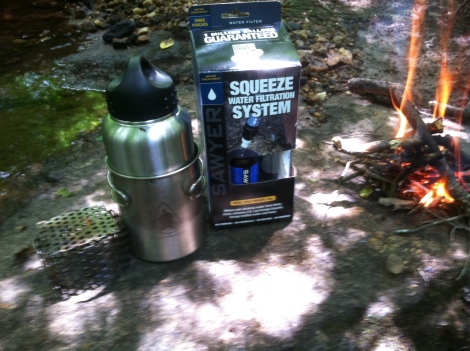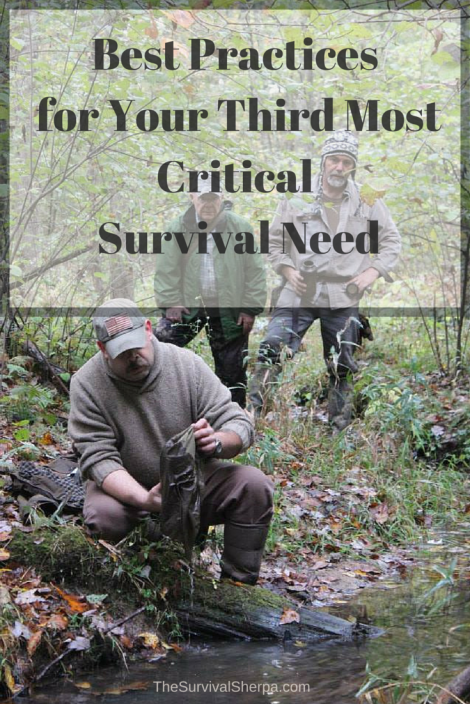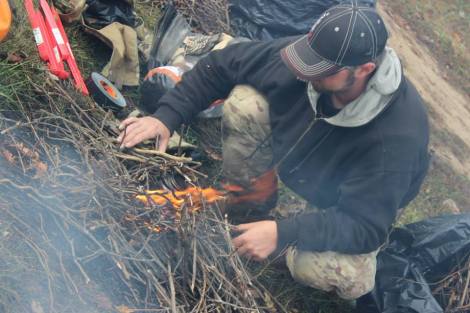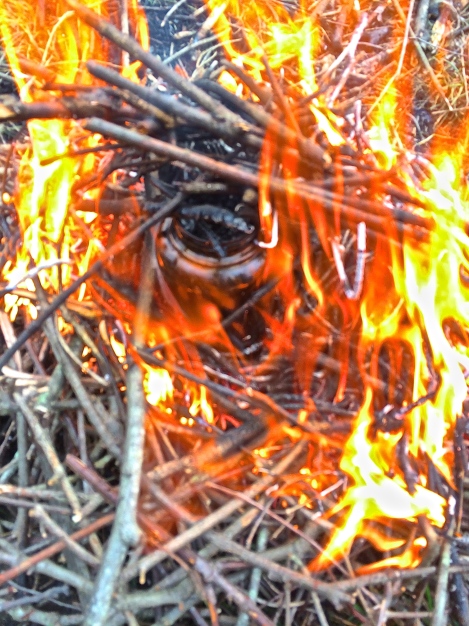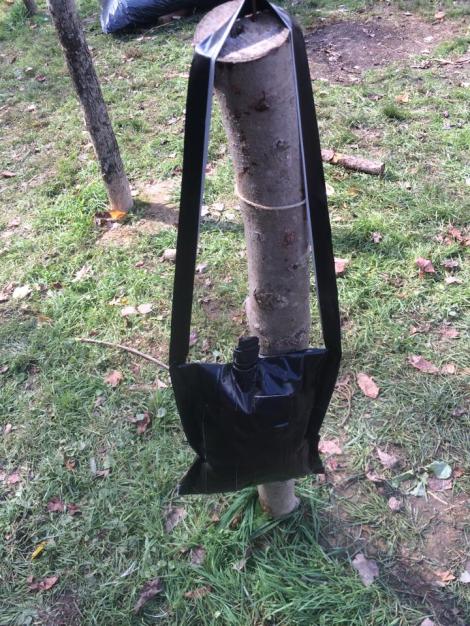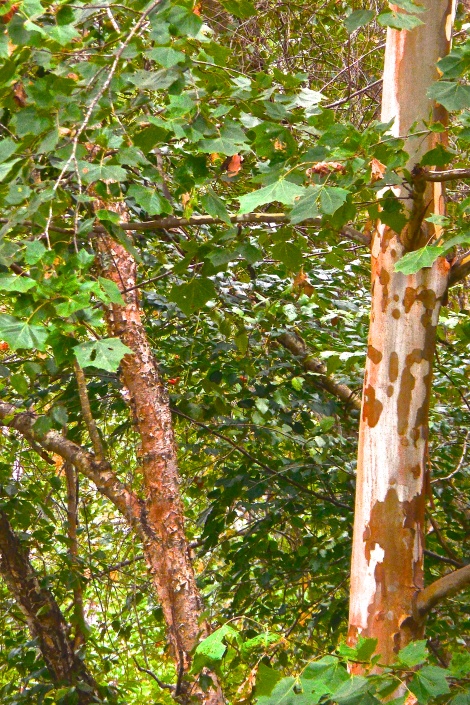by Todd Walker
Two roads diverged in a wood… and your child is lost!
Hiking and camping season is upon us. Families are hitting the trails to enjoy nature and all its benefits. Nature is neither for you or against you. Nature is neutral. But Mother Nature can also be brutal. Any survival instructor that says otherwise is delusional.
Over the past two years, my 9 year-old grandson and I have spent time together learning survival and self-reliance skills. When he visits now, he usually asks if we can build a fire. The thermometer reading in Georgia matters not, he wants to burn stuff.
Leadership equals influence. Influencing your child to get outside is often easier achieved by you Doing the Stuff. Share your knowledge, demonstrate the skills, and let your child imitate the skills until they become proficient. If your child knows nothing else about survival, the following will keep him alive if ever lost in the backcountry.
3 Core Survival Skills
What is survival? It may be easier defined by stating what survival is not.
Survival isn’t wilderness living, camping, foraging, or bushcraft. Your child won’t have to carve a spoon, make a survival bow, know 21 edible plants, or build an elaborate shelter to stay alive in the unfortunate event he is ever lost in the woods. It’s highly probable that search and rescue will find him before the weekend is over.
Survival is any situation where if you don’t take corrective action, you die.
Train your child in three core survival skills…
Shelter – Hydration – Sleep until rescued.
Core Skill #1: Build a Microclimate
Clothing: The most important piece of the survival puzzle is having the ability to build a microclimate for core temperature control. The first layer of shelter is the clothing your child wears. Dress appropriately for the weather and location. Cotton is a killer in cold weather survival due to its ability to hold moisture against the body. However, it can be a lifesaver in hot weather by exploiting this same property for evaporative cooling.
Tarp/Cover: Beside clothing, go out prepared to use every shelter option available in your kit. A reusable mylar space blanket is my #1 option to build an emergency microclimate. Add a clear 9 x 12 inch plastic painter’s tarp and you have a lightweight, effective cold weather microclimate called the Kochanski Super Shelter. You’ll need to teach your child to collect enough wood to build a fire in front of this shelter for it to be effective through the night.
Insulation Layer: A closed-cell foam ground pad is what I carry when backpacking or camping. This piece of gear offers a barrier from cold ground (conduction) or helps prevent heat loss from convection when laid in the bottom of my hammock. From my experience of hanging and ground camping in a sleeping bag, this insulation layer is essential to creating a microclimate.
Without a commercial ground pad, two contractor trash bags can be used as an insulation layer. Fill both bags with leaves or fluffy stuff so that, when compressed, you have a 4 to 6 inch barrier of insulation. In a pinch, the forest litter filled bags can be used as a makeshift sleeping bag. There are multiple survival uses for plastic bags. Two bags won’t add much weight but multiply your survival chances.
Fire: The main reason I teach fire craft to my 9 year-old grandson is to reinforce its forgiving nature as a survival tool. Yes, even with no other shelter options, fire can keep you alive. We have many articles parked on our Bombproof Fire Craft Page.
Microclimate Preps
- Clothing
- Reusable Emergency Space Blanket/Tarp
- Clear Painter’s Tarp
- Two Contractor Trash Bags
Core Skill #2: Hydration
Find and drink enough water to cause urine to be clear. Remember, even if you don’t have a way to disinfect your water, drink it anyway. You want to die from dehydration or have the trots a week later after being rescued hydrated and logical in the wilderness?
The above statement may seem counter to “proper” survival advice. But if you’re not prepared with water treatment gear, drink the water to stay alive. Food should not be a concern for short-term survival. If you have enough calories to consume daily, eat up. Otherwise, fasting is your best choice. Physiologically, our bodies can go several weeks without food with no ill effects.
Be prepared with water disinfection equipment. My preferred method of water disinfection is boiling. You’ll need a metal container and fire. Fire plays such an important role in survival. Without a suitable metal container, use your garbage bag to boil water using the stone boil method. Practice fire craft! I also like the lightweight Sawyer Mini filters. More detailed information on water treatment can be found here.
Plants and trees are also a source of water and need no filtration. Cut a wild grapevine and water will drip into a container. A clear plastic trash bag can be used to get water from leafy, low-hanging tree branches through transpiration. John McCann has a great article on using this method.
Hydration Preps
- Metal Container
- Water Filter
- Water Purification Tablets
- Trash Bag and Hot Stones
- Transpiration Bag
Core Skill #3: Sleep
“The quality of a survival kit is determined by how much it can help you when you need to sleep. If you can sleep well at night, you have it made.” ~ Mors Kochanski
When camping, I call sleep the number one skill of a good woodsman. But in a true wilderness survival situation, restorative sleep is key to staying alive. If you’re child has learned to build a proper microclimate and learned at least two methods of disinfecting drinking water, then sleeping 8 hours is his next survival skill.
Scared and alone in the wilderness, I always go back to fire. Beside being a great survival tool for shelter and water disinfection, a fire offers phycological comfort. Kind of like a nightlight in the woods. It not only keeps the boogieman at bay, but gives some peace of mind concerning predators.
Your child should sleep at opportune times. Not all eight hours have to be consecutive like we stress when home. An hour here and there adds up.
With sufficient sleep, your child will be better prepared to deal with the stress of survival. Our physiological body needs sleep for rational thought and decision-making. Sleep deprived, we make stupid mistakes. Use every available resource to make a comfortable microclimate for sleeping and shelter from the elements.
Sleep Preps
- See Microclimate above – Core Temperature Control
- Fire
- Practice in the backyard with minimal gear
Your child can beat the odds of surviving by having the knowledge and practiced skills mentioned here. Spend some time rehearsing the plan before he needs the skills. As the Boy Scout’s motto states, “Be Prepared.”
Keep Doing the Stuff of Self-Reliance,
Todd
P.S. – You can also keep up with the Stuff we’re Doing on Twitter, Pinterest, Google +, YouTube, Instagram, and Facebook… and over at the Doing the Stuff Network.
P.P.S – If you find value in our blog, Dirt Road Girl and I would appreciate your vote on Top Prepper Sites! You can vote daily by clicking here or on the image below. Check out all the other value-adding sites while you’re there…
Thanks for Sharing the Stuff!
Copyright: Content on this site (unless the work of a third-party) may be shared freely in digital form, in part or whole, for non-commercial use with a link back to this site crediting the author. All links in articles must remain intact as originally posted in order to be republished. If you are interested a third-party article, please contact the author directly for republishing information.



